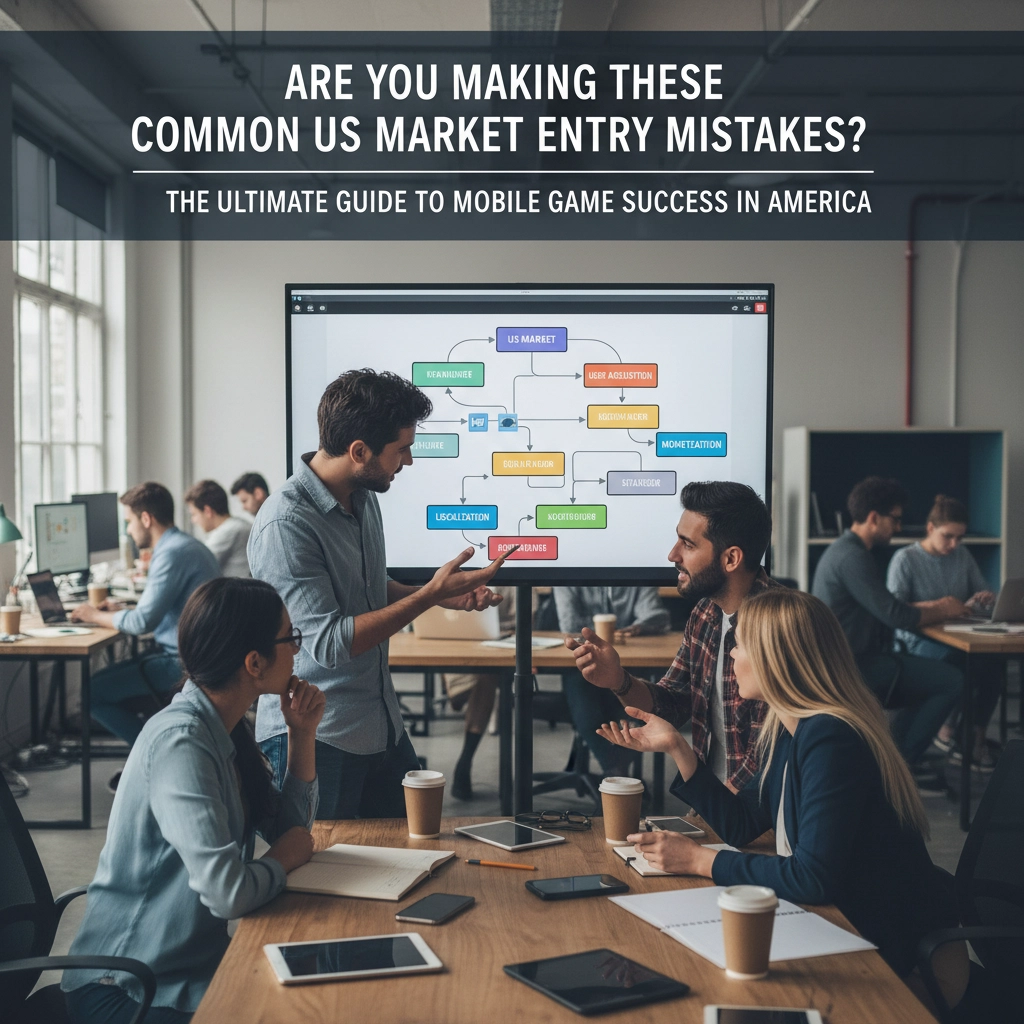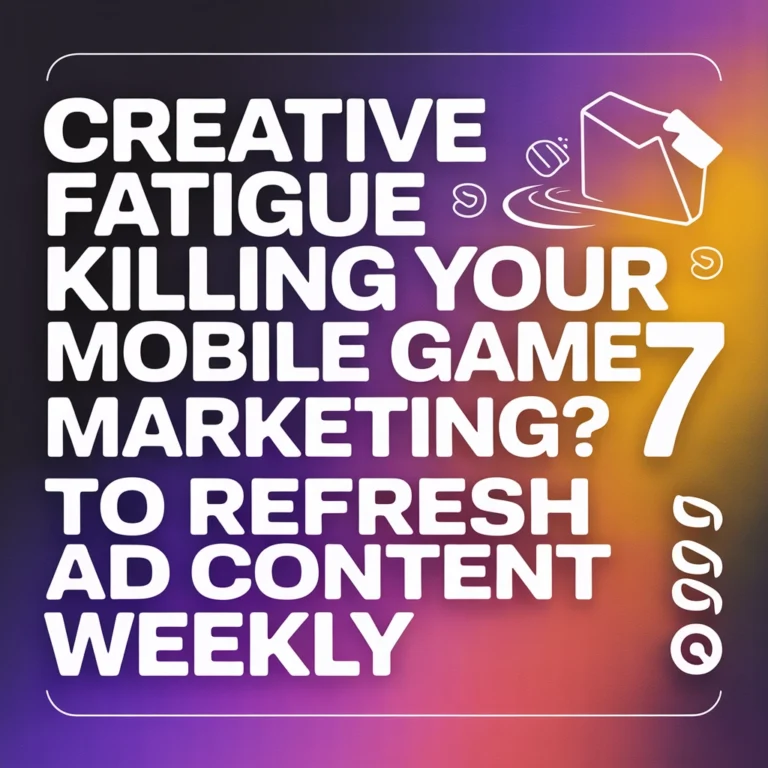Are You Making These Common US Market Entry Mistakes? The Ultimate Guide to Mobile Game Success in America

Breaking into the US mobile gaming market isn't just about having a great game, it's about avoiding the costly mistakes that have derailed countless promising titles. With over 50,000 new mobile apps hitting the market globally each year, the competition is fiercer than ever. Let's dive into the most common pitfalls international studios face and, more importantly, how to sidestep them completely.
Mistake #1: Surface-Level Market Research (And Why It's Killing Your Chances)
Here's the uncomfortable truth: most studios think they've done market research when they've really just scratched the surface. You've probably been there, checking top charts, scrolling through a few competitors, maybe running some basic analytics, and calling it a day.
What This Looks Like:
- Using tools like AppMagic to check category revenue and downloads
- Making development decisions based solely on trending genres
- Assuming high-revenue categories automatically mean easy success
The Reality Check:
Take Merge games, for example. They might look incredibly attractive when you examine revenue trends, but dig deeper and you'll discover that success rates in this category are dramatically lower than they appear. Many top-performing titles succeed because of massive UA budgets, strong IP, or marketing advantages that newer entries simply can't replicate.
The Fix:
Conduct proper audience intelligence research. Understand not just who plays certain genres, but why they play them. Use tools like surveys, focus groups, and behavioral analytics to segment players into groups with similar motivations. Ask yourself: What specific problem does your game solve that existing titles don't?

Mistake #2: Ignoring Cultural Nuances and Player Expectations
International studios often underestimate how different American players are from their home markets. US mobile gamers have distinct preferences, spending habits, and cultural touchstones that directly impact game success.
What This Looks Like:
- Direct translations without cultural adaptation
- Ignoring American holidays, events, and cultural references
- Using monetization models that work elsewhere but fail in the US
The Fix:
Invest in proper localization that goes beyond language. Partner with US-based cultural consultants, test your game with American focus groups, and adjust your monetization strategy to match US spending patterns. Americans are often willing to spend more on convenience and cosmetics than players in other markets.
Mistake #3: Underestimating Technical Standards and Platform Requirements
The US market has zero tolerance for technical issues. Americans expect flawless performance, instant loading, and seamless experiences across all devices. One crash can mean permanent uninstall.
What This Looks Like:
- Releasing with known bugs or performance issues
- Poor optimization for popular US device models
- Ignoring accessibility standards
- Inadequate customer support infrastructure
The Fix:
Implement rigorous QA testing specifically on popular US devices (iPhone models, Samsung Galaxy series). Set up US-based customer support with native English speakers. Ensure your game meets Apple and Google's latest technical requirements and accessibility guidelines.
Mistake #4: Weak Monetization Strategy and Retention Planning
Many studios focus heavily on acquisition but fail to build sustainable monetization and retention systems for the US market. American players have high expectations for content depth and ongoing value.
What This Looks Like:
- Shallow progression systems that don't justify spending
- Limited content that players exhaust quickly
- Monetization that feels predatory rather than valuable
- No long-term content roadmap
The Fix:
Design monetization systems that provide genuine value. US players are willing to pay for convenience, time-saving, and exclusive content, but only if it enhances their experience. Build deep progression systems and plan at least 6-12 months of content updates before launch.

Mistake #5: Inadequate Pre-Launch Marketing and ASO Strategy
The biggest mistake? Thinking great gameplay alone will drive discovery. In the crowded US market, discoverability is everything, and that requires strategic marketing from day one.
What This Looks Like:
- Launching without App Store Optimization (ASO)
- No pre-launch community building
- Ignoring influencer and social media marketing
- Insufficient budget for paid user acquisition
- Not testing creative assets with US audiences
The Fix:
Start marketing before you finish development. Build your ASO strategy early, focusing on keywords US players actually search for. Test your creative assets (icons, screenshots, videos) with American audiences through platforms like Facebook Ads. Partner with US-based influencers and content creators in your genre.
Mistake #6: Poor Timing and Seasonal Planning
Launching at the wrong time can doom even excellent games. The US market has specific seasonal patterns, holiday spending spikes, and competitive cycles that international studios often miss.
What This Looks Like:
- Launching during major competitor releases
- Ignoring US holiday spending patterns
- Missing back-to-school or summer gaming trends
- Not planning for Apple/Google's seasonal promotions
The Fix:
Research US gaming seasonal trends in your genre. Plan your launch to avoid major competitor releases and align with favorable market conditions. Prepare holiday-themed content and events for major US holidays like Halloween, Thanksgiving, and Christmas.

Success Stories: What Getting It Right Looks Like
Among Us by InnerSloth perfectly demonstrates successful US market entry. They understood American social gaming culture, leveraged influencer marketing on platforms like Twitch and YouTube, and built gameplay that thrived in the US's highly connected gaming environment.
Similarly, PUBG Mobile's success came from understanding American preferences for competitive, skill-based gameplay while adapting their monetization to match US spending habits on cosmetics and battle passes.
Your Market Entry Action Plan
Phase 1: Research and Validation (Months 1-2)
- Conduct comprehensive market research beyond surface metrics
- Test core concepts with US focus groups
- Validate monetization models with American players
Phase 2: Development and Localization (Months 3-8)
- Implement cultural adaptations and proper localization
- Ensure technical excellence on popular US devices
- Build deep progression and monetization systems
Phase 3: Pre-Launch Marketing (Months 6-9)
- Develop ASO strategy with US-focused keywords
- Build community through social media and influencers
- Test creative assets and messaging with US audiences
Phase 4: Launch and Scale (Month 9+)
- Execute coordinated launch strategy
- Monitor performance and iterate quickly
- Scale successful user acquisition channels
The US mobile gaming market offers incredible opportunities, but success requires more than great gameplay: it demands strategic thinking, cultural understanding, and flawless execution. By avoiding these common mistakes and following proven success frameworks, your game can capture and retain American audiences in even the most competitive markets.
Ready to conquer the US mobile gaming market? The opportunity is massive, but the window won't stay open forever. Start implementing these strategies today, and give your game the competitive edge it needs to succeed in America's dynamic gaming landscape.






